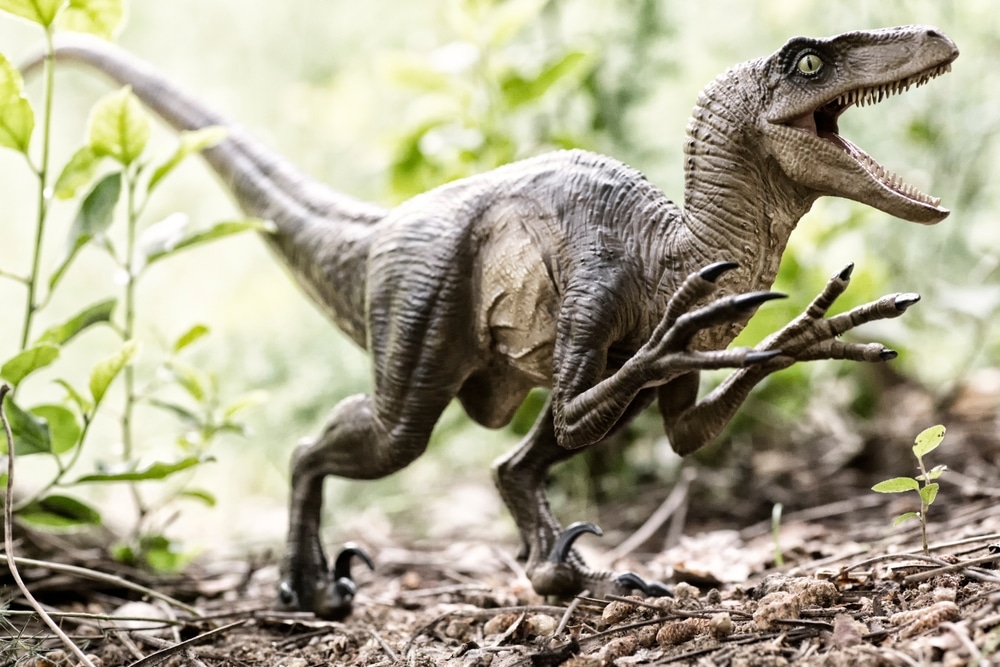The recently identified theropod, Alpkarakush kyrgyzicus, addresses a significant knowledge shortfall in Jurassic theropod biodiversity and progression due to its distinct characteristics and the recovery of both an adult and a juvenile.
Theropods represent a highly varied and crucial large group of dinosaurs, encompassing the notorious predators Tyrannosaurus and Allosaurus, along with present-day birds. There exists a vast assortment of known theropods from the Mesozoic Era, the era dominated by dinosaurs.
Just as lions primarily inhabit Africa and tigers are exclusive to Asia, Allosaurus was found extensively throughout the Jurassic in North America and southwestern Europe, while the comparably sized Metriacanthosaurs resided in China. Nevertheless, previously there were no significant Jurassic predatory dinosaurs identified within the vast expanse between central Europe and East Asia.
Unveiling Alpkarakush Kyrgyzicus
Researchers have recently located the remains of a new theropod dinosaur in Kyrgyzstan, Alpkarakush kyrgyzicus, representing the first theropod discovered in this region and filling this crucial knowledge void. The initial fossil remains were uncovered in 2006 by Kyrgyz paleontologist Aizek Bakirov. The site of the find is situated in the mountainous desert region near the city of Tashkumyr in western Kyrgyzstan. The sediments from the Balabansai Formation exposed at this location were laid down during the Middle Jurassic period approximately 165 million years ago.
Insights from Excavation and Distinctive Characteristics
During multiple excavation efforts from 2006 to 2023, elements of the skull, vertebrae from the back and pelvis, portions of the shoulder girdle and forelimbs, along with nearly complete pelvic girdle and hind limbs of a predatory dinosaur approximately eight to nine meters in length were unearthed. It represents a new genus and species with previously unrecognized traits.
Particularly remarkable is its highly prominent “eyebrow” on the so-called postorbital bone, a cranial element located behind the eye socket, indicating the existence of a horn at this location. Additional distinctive characteristics can be observed on the dorsal vertebrae and the femur.
Phylogenetic Significance and Biogeographical Implications
By comparing it with various other theropods, it is evident that the newly identified species is part of the metriacanthosaurids, closely linked to the sizable carnivorous dinosaurs of East Asia. Researchers propose that the genesis of metriacanthosaurids, along with other significant theropod groups, occurred in Southeast Asia, from which they disseminated to other continents through Central Asia and Europe. “While the connection of Alpkarakush to the metriacanthosaurids isn’t particularly astonishing, this finding fills a substantial void in our understanding of Jurassic theropods. It offers us crucial new perspectives on the evolution and geographic distribution of these creatures,” remarks Prof. Oliver Rauhut from the Bavarian Collection of Paleontology and Geology in Munich (SNSB-BSPG), who is the primary author of the research.
Age and Development Assessment
The discovery site also yielded the remains of a second, slightly smaller specimen of Alpkarakush kyrgyzicus. Analyzing the internal bone composition indicated that the larger specimen was nearly an adult, at least seventeen years of age, and fully sexually mature, whereas the smaller specimen is identified as a juvenile. It’s possible that a parent creature roamed with its offspring 165 million years ago.
Advancements in Paleontological Technology
Moreover, photogrammetric digital 3D models of all pertinent bones of the Alpkarakush have been created. “These models are accessible online now, enabling researchers across the globe to conduct follow-up analyses and produce 3D prints,” states co-author Dr. Oliver Wings, Director of the Bamberg Natural History Museum.
Cultural and Scientific Relevance
The fossil is named after Alpkarakush, a colossal bird found within the mythic Kyrgyz “Manas” epic, known to support the heroes during crucial junctures. The species designation “kyrgyzicus” directly alludes to the Kyrgyz Republic, where the new predatory dinosaur was discovered. Alpkarakush kyrgyzicus may even potentially turn out to be the first native dinosaur skeleton displayed in Kyrgyzstan: should adequate backing be secured, plans are underway to present a reconstruction alongside the original remains at the National Historical Museum in Bishkek, pending the necessary funding acquisition.
This research is the product of a collaborative effort between the M.M. Adyshev Institute of Geology of the National Academy of Sciences of the Kyrgyz Republic and two departments of the Bavarian Natural History Collections (Bavarian Collection of Palaeontology and Geology in Munich and Bamberg Natural History Museum) along with the Friedenstein Foundation Gotha. The research, supported by the German Research Foundation, has now been published in the Zoological Journal of the Linnean Society.
Image Source: Jaime Calderon / Shutterstock






























